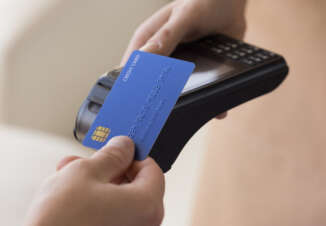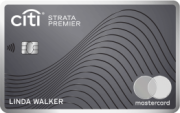The content on this page is accurate as of the posting date; however, some of the offers mentioned may have expired.

You are at a store and you decide to buy something. You take the item you want up to the register, the sales clerk tells you how much you owe and you pull your credit card out of your wallet and hand it over. Swipe, sign and poof! You leave the store with your brand new item without handing over a single dollar. It’s almost like magic, right?
Wrong! It’s dangerous to think of credit cards in that way, or as “free money,” because that attitude makes it oh-so-easy to overspend and get into debt. Experts have known for a long time that consumers spend differently when they use credit cards as opposed to cash.
"When consumers are exposed to new products and thinking about paying with credit, they tend to focus on the good things about the product — the aesthetics of it, the features that are better than other products they're considering, the sexiness and luxury of it. That's as opposed to details related to cost, like the price, shipping cost, warranty cost, installation cost and effort, " said Randall Rose, author of a study entitled "Do Payment Mechanisms Change the Way Consumers Perceive Products?" that has appeared in the Journal of Consumer Research.
By gaining a better understanding the basics of what happens during a credit card transaction, you give yourself the opportunity to be much more mindful when paying for things using plastic.
Authorizing a Purchase
When a merchant swipes your card (or when you tap or wave it) at a register, or any credit card reader,card’s information and atransaction amount is forwarded to the merchant’s bank that will process this transaction and fund the merchant on your behalf – called. Merchant’s bank in this transaction is known as an Acquirer (or acquiring bank).
At the Authorization phase, the transaction detailsare passed along to your credit card issuer, the company that issued you the card. If your issuer determines that you have enough credit available to cover the purchase amount, they will transmit an approval to the acquirer, who then passes an approval code onto the store. At that point you are presented with an authorizationreceipt; you sign, gather up your new belongings and go on your way.
If things are running smoothly, this entire process should only take a few seconds.Despite the fact that you have received an authorization receipt and been allowed to leave with your item, the store has not yet received any money for it. Most store credit card readers store the information after authorizing it, and thensubmit all transaction details, again, to the Acquirer, but this time with a request for payment. This storage of credit card sales is known as batching. In general, most stores collect all daily transactions in a batch, which they present for payment to the Acquirer at day’s end. The Acquirer needs a couple of days to initiate a process known as “Clearing”.
Getting Paid
“Clearing” is a financial process during which the Merchant’s Acquiring bank sends the transaction information to the card network that supports your card,such as Visa, MasterCard, Discover and American Express.
The card network sends the purchase data to your credit card issuer, a financial institution such as Bank of America, Chase or Citibank. The issuer deducts an interchange fee, typically 3% of purchase amount, a part of which is shared with whichever credit card network that processed the transaction.
Although at time of authorization a hold at or above your purchase amount was placed on your card, this is the moment your issuer will actually deduct the money and credit network who willin-turn wire the money to the Acquirer which deducts a discount fee, and deposits remaining balance of funds to the Merchant’s account with the Acquirer.
Now all that remains is for you to pay the credit card issuer back, and, preferably, do it in full, before the monthly billing cycle ends.





